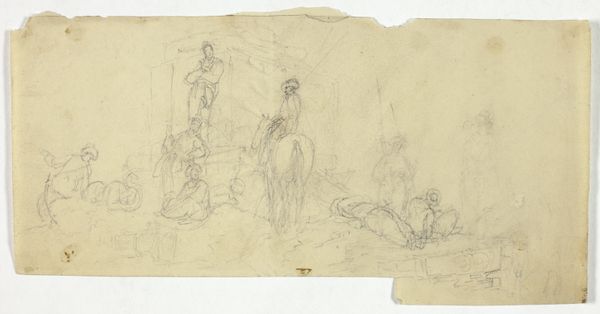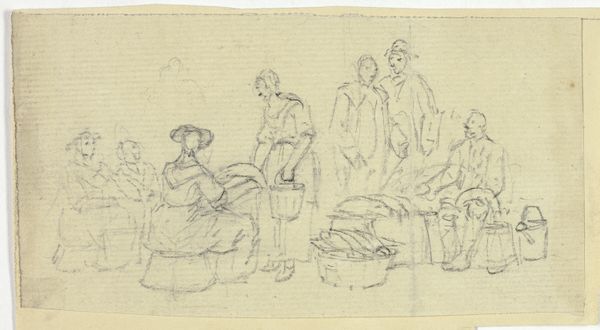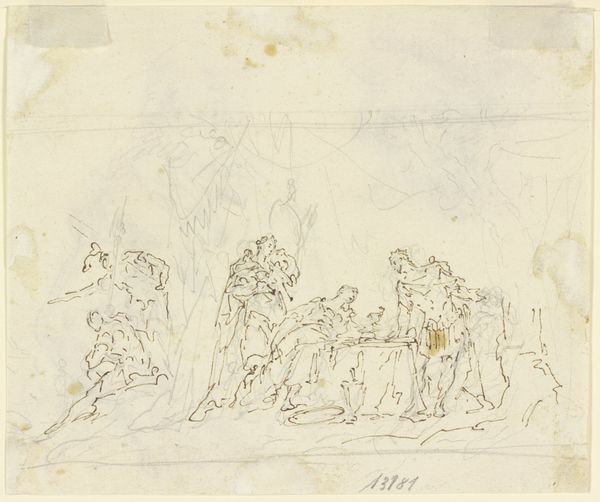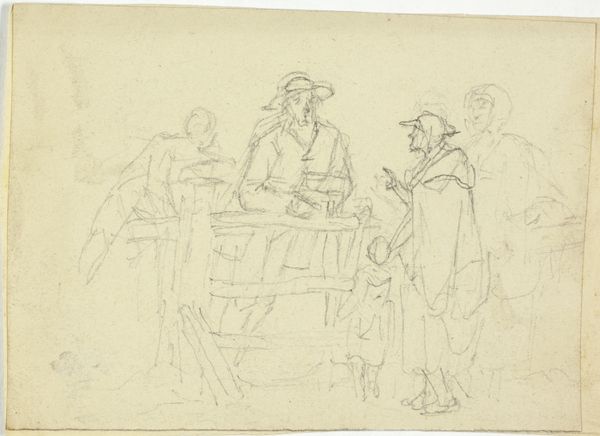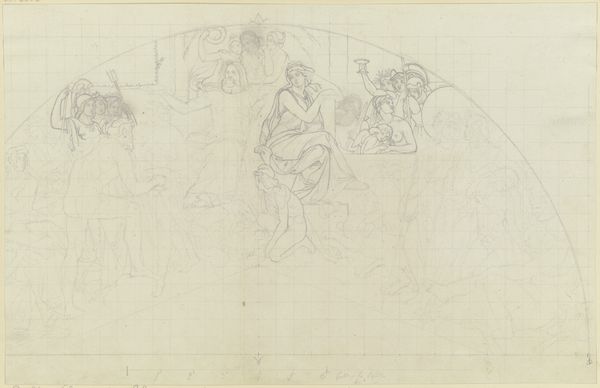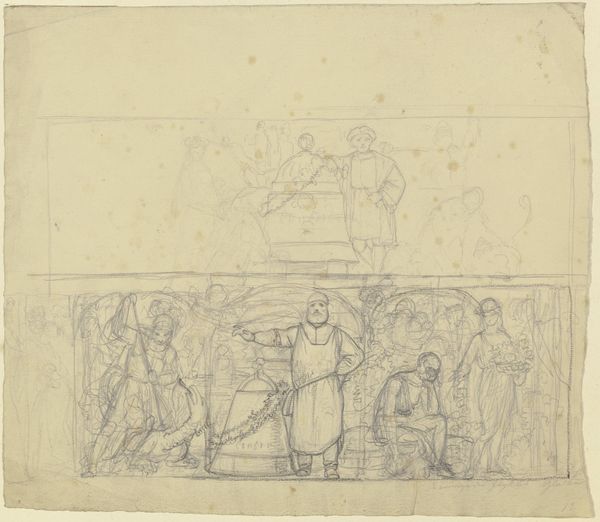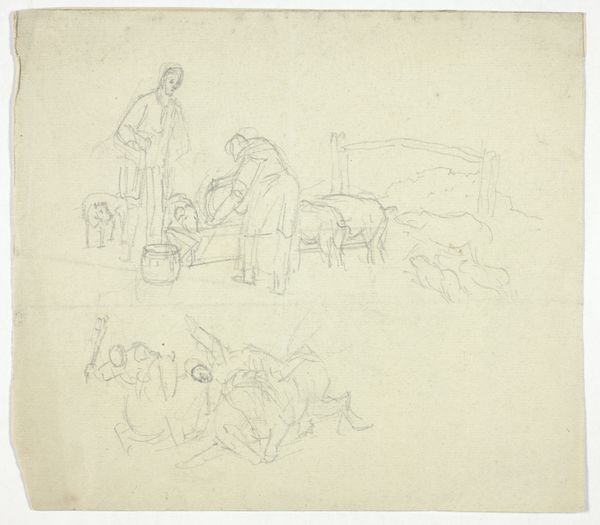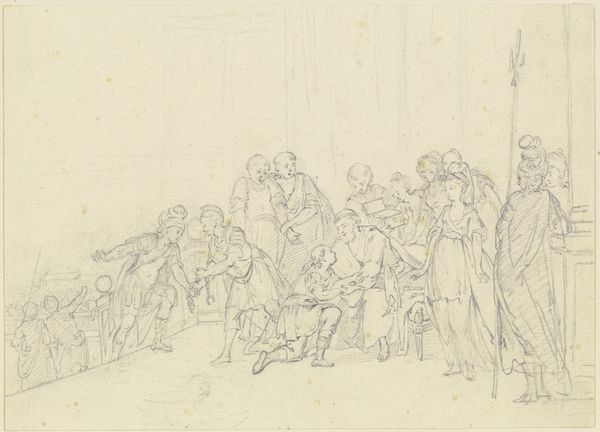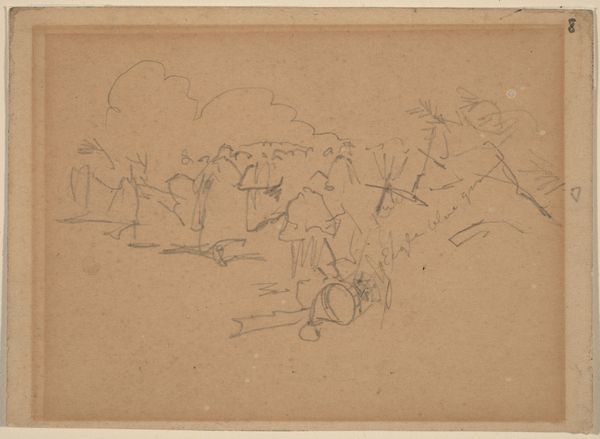
drawing, paper, graphite
#
drawing
#
landscape
#
figuration
#
paper
#
graphite
Dimensions: 95 × 160 mm
Copyright: Public Domain
Curator: This is "Figures with Market Goods and Three Sketches," a graphite drawing on paper by William Henry Pyne, date unknown, residing here at the Art Institute of Chicago. It strikes me immediately by its incredible lightness; it is subtle in terms of its overall values, and fleeting. Editor: Fleeting indeed. My first thought is labor, visible in the posture of the figure bearing the goods atop their head and in the sacks that are laying scattered across the foreground. Curator: Yes, and I think that this reading is clearly enabled by Pyne's deft, almost stenographic handling of the graphite. Look how he varies the pressure to suggest depth. We have an oscillation of positive and negative space which enlivens the composition and guides our eye in various directions. Editor: Precisely. But observe, too, the social interactions taking place amidst this flurry of commerce. It captures a certain tension; it's evident from their very poses—are these workers pausing briefly in their work or trying to get the best bargain? These goods wouldn't materialize without an effort. It leads one to think about what kinds of working-class negotiations might have been unfolding right at that moment. Curator: A convincing point. In that respect, Pyne uses light and shadow not merely to depict but almost to evoke atmosphere, conveying something akin to everyday interactions as forms of ephemeral dramas that carry historical significance. I mean that one should approach the forms themselves almost as signs within a given, constructed marketplace. Editor: Fair. Yet, it is a kind of pre-capitalist world we're glimpsing here—a far cry from industrialism, yet the foundation for it all—the human exchange! We are faced here, with bodies subjected to marketplace exchanges; labor and goods both in relation with one another. The medium reflects an everyday and fleeting subject. It all makes us see those material relationships—almost laid bare for inspection, here. Curator: I agree. Perhaps this interplay is what renders the artwork so perennially captivating, after all. Editor: Undoubtedly. A remarkable testament to how simple materials can highlight the complexities of daily life and labor.
Comments
No comments
Be the first to comment and join the conversation on the ultimate creative platform.
